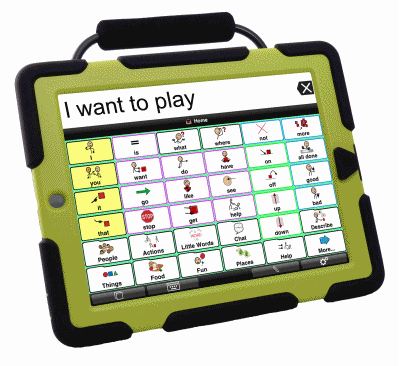Blog
Parents’ Guide to Getting Started with an AAC Device
Your child was just given a new AAC device, now what? One of the hardest parts about beginning to use an AAC device with children, is knowing what to do with it once you have it. An alternative and augmentative communication (AAC) device is any device that allows a child to use language to communicate other than spoken speech.
It can be tricky to figure out how to incorporate the device into your child’s everyday life, either at school or at home. However, it is important to teach your child to use their AAC device in the same way you would teach them to speak.
Here are some ideas for how you can implement using the device at home or at school:
1) Have a Speech Pathologist Find a Good Fit
First, your child needs to get evaluated for an AAC device. This is something that should be done by a good AAC evaluation team. These teams are usually made up of a speech-language pathologist who specializes in AAC as well as an occupational therapist who can give input about the motor components of using AAC devices. There are many ways for children to activate AAC devices and they will know which one is right for the child.
2) Become Familiar with your Child’s AAC Device
Your child should have gone through speech therapy and an evaluation to determine what means of communication is best for him and his family. Regardless of what method was chosen (sign language, picture communication, picture board, speech output device), the adults who are going to be communicating with the child need to be comfortable using it. Take some time to get familiar with the AAC device or system.
3) Model Using the AAC Around the Child
Children need to see their AAC device being used around them. If they never see anyone communicating with it, why would they be motivated to use it themselves?
Just as children with typical speech need to hear language modeled constantly before they are able to begin using it, your child needs to see his AAC device being used as well. Use the system when you are talking to the child, talking to other adults, talking to other children, etc. Just make sure that you are leaving the AAC device or system near the child (not taking it away) so that he or she can use it as well.
4) Encourage The Child’s Attempts to Use the AAC Device
At first your child will probably not be using his AAC device meaningfully. He may just push buttons randomly to hear what they sound like. But whatever you do, do not take it away. This is all a part of the learning process. If your child pushes a button, even if it’s accidental, you can still respond as though it was meaningful. If he pushes “potato” when you’re playing in the bedroom, you can say “Potato? We don’t have any potatoes in here. There may be some in the kitchen though.” This may seem silly, but it helps the child understand that the words he is creating using his AAC device have real meaning.

-Mallory Varrone MA CF- SLP, TSSLD




